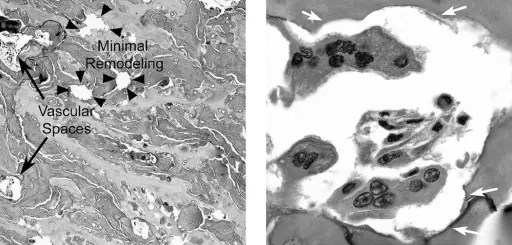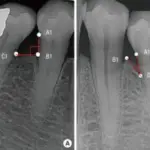Osteopetrosis is a rare, hereditary, diffuse, and symmetric skeletal sclerosis caused by osteoclast dysfunction.
What is the Pathology of Osteopetrosis?
The pathology of osteopetrosis is:
-Etiology: The cause of osteopetrosis is osteoclastic dysfunction resulting from gene mutations in at least 8 different genes.
-Genes involved: TCIRG1, CLCN7, OSTM1, PLEKHM1, SNX10, TNFSF11 and TNFRSF11A.
-Pathogenesis: The sequence of events that lead to osteopetrosis is osteoclast dysfunction.
-Histology: The histology associated with osteopetrosis shows primarily woven bone, central core of cartilage with dense and irregular bony trabeculae, often abundant osteoclasts, and reduced marrow space.
How does Osteopetrosis Present?
Patients with osteopetrosis typically affect both males and females presenting at infancy or adulthood. The symptoms, features, and clinical findings associated with osteopetrosis include brittle bone, bone sclerosis, bone marrow failure, and extramedullary hematopoiesis.
How is Osteopetrosis Diagnosed?
Osteopetrosis is diagnosed by a thorough clinical evaluation, detailed patient history, and an X-ray.
How is Osteopetrosis Treated?
Osteopetrosis is treated by bone marrow transplantation.
What is the Prognosis of Osteopetrosis?
The prognosis of osteopetrosis is poor with shortened life expectancy.



